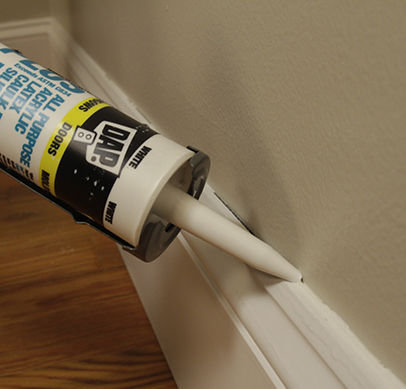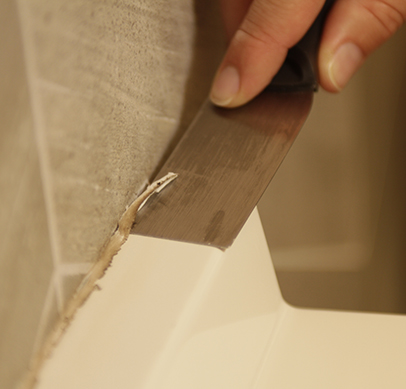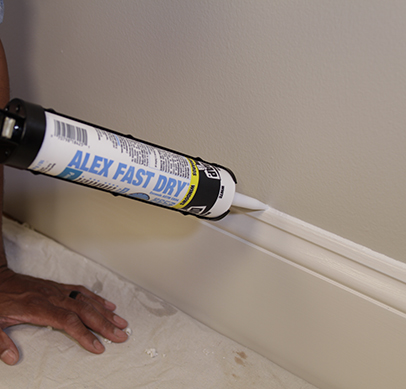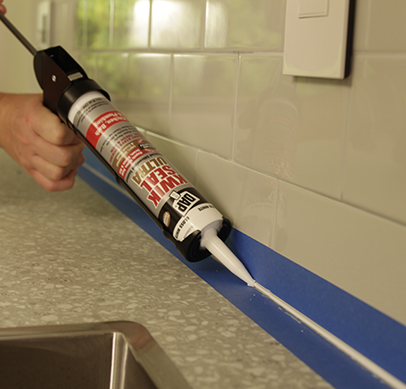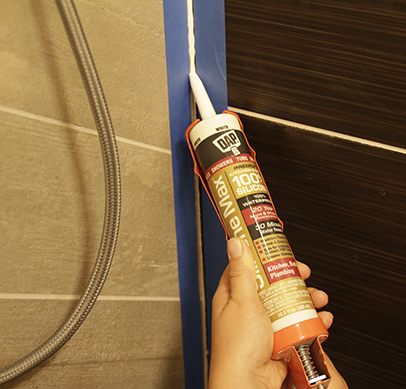
How to Recaulk a Shower
When the caulk or sealant no longer looks attractive, take these steps to replace it.

-
How to Recaulk a Shower Step-by-Step
How to Recaulk a Shower Step-by-Step
Tools
- Putty knife
- Utility knife
- Caulk remover tool
- No-scratch plastic scouring pad
- Caulk gun
- Caulk smoothing tool
- Damp rag
- Painter's tape
Materials
- DAP Silicone Max Premium 100% Silicone Kitchen & Bath Sealant
- Krud Kutter® Caulk Remover
- Rust-Oleum Tub & Tile Refinishing Kit
- Isopropyl rubbing alcohol
Caulked joints in a shower are highly visible. So when the caulk or sealant shows signs of wear, from pulling away from the joint to stains that can’t be cleaned, it’s time to replace it. It’s an easy DIY job, even if you’ve never caulked before. Follow these steps for the best technique and products.
Before recaulking, clean the surfaces of the shower to remove any soap residue, mold or mildew.
Step 1: Remove Loose Caulk
Remove any caulk or sealant that’s already loose with a flexible putty knife. Try loosening an edge and pulling off the caulk in strips. Work carefully to avoid scratching or marring the nearby surfaces.
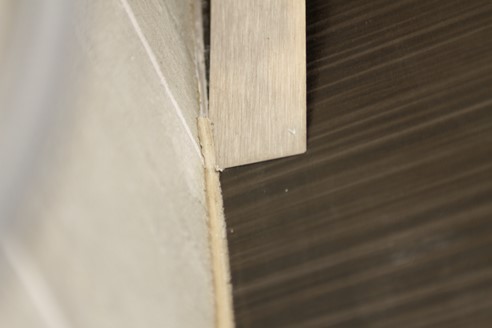
Step 2: Soften Caulk for Removal
Carefully score one edge of any remaining caulk or sealant with a putty knife or utility knife. This breaks its bond to the surface. Then apply a caulk remover. It eases the removal of nearly all types of caulks and sealants, including silicone, polyurethane and acrylic latex. Krud Kutter Caulk Remover has a gel-like consistency that clings to the surface of the caulk and stays wet. After application, let the caulk remover sit for 5 to 20 minutes. Longer soaking might be needed, depending on the type and amount of caulk or sealant to remove.
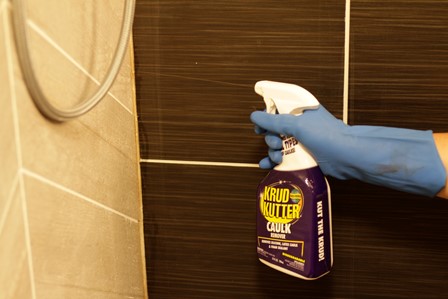
Step 3: Scrape Off Softened Caulk
After soaking, scrape away the softened material with a putty knife or specialty caulk remover tool. If you can’t scrape out all the caulk or sealant, reapply the Caulk Remover and let it sit until the caulk is softened.
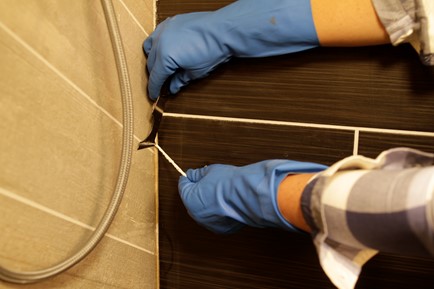
Step 4: Get Rid of Any Residue
Even after you’ve removed the old caulk or sealant, there still might be residue left. Make sure any residue is completely scraped away using a no-scratch plastic scouring pad. Then clean the surface by wiping down the area with isopropyl rubbing alcohol.
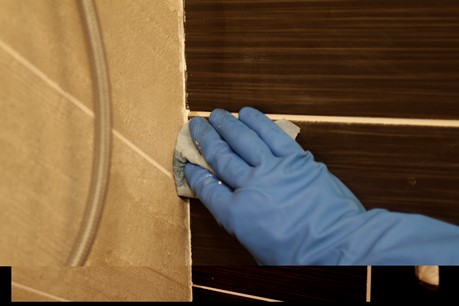
Step 5: Kill Mold and Mildew
If any mold or mildew is visible after removing the caulk, kill it by washing the area with a bleach and water solution (1 part bleach to 10 parts water). Rinse the area well and let it dry before applying new sealant.
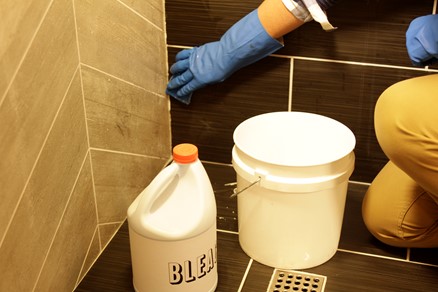
BONUS TIP: If your shower surfaces have lost their luster, you can renew them with Rust-Oleum Tub & Tile Refinishing Kit before recaulking. The two-part epoxy acrylic product is rolled on and provides excellent adhesion, durability and color retention. Use it on ceramic tile, porcelain, fiberglass, acrylic, cast iron and steel tubs and sinks
Step 6: Tape for Straight Edges
Because caulked joints are highly visible in a shower, it’s important that they have clean, straight edges. To help with that, place painter’s tape about 1/8 inch from the joint on each side.
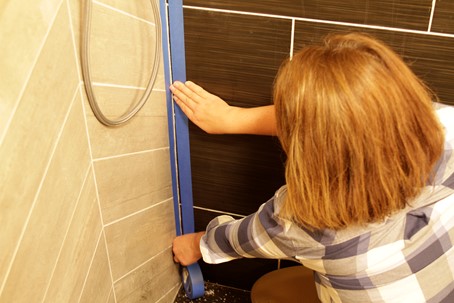
Step 7: Use Sealant with Mold and Mildew Protection
For maximum waterproof protection and long-lasting durability, use DAP Silicone Max Premium 100% Silicone Kitchen & Bath Sealant. It provides 20-year mold and mildew protection, won’t crack or shrink and is water-ready in just 30 minutes. Cut the tip of the nozzle with a utility knife at a 45-degree angle, to match the size of the gap you’re caulking.
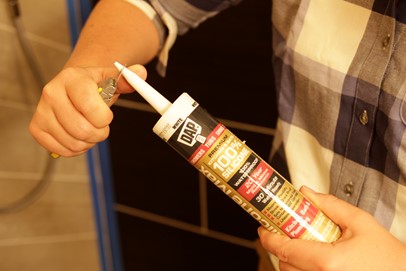
Step 8: Apply the Sealant
Insert the cartridge into a caulk gun. Starting at one end, hold the gun at a 90-degree angle to the joint and move the gun steadily to the other end.
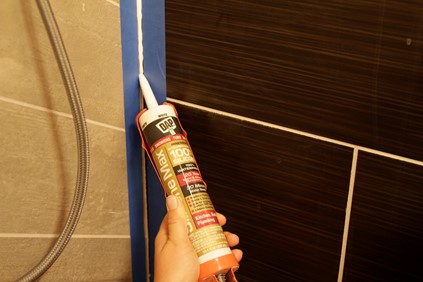
BONUS TIP: Use a high-quality dripless, smooth-rod-style caulk gun so that you can stop the flow of the caulk instantly, to avoid messy drips. It also requires less hand pressure on the trigger than older-style guns. Look for one with a seal punch, which is used to break the foil seal that some sealants have at the base of the nozzle, and a built-in cutter, for cutting off the tip of the nozzle. Also check the thrust ratio of the gun—the force or mechanical advantage applied every time you pull the trigger. The thicker the caulk or sealant you’re applying, the greater the force you need. For most home projects, a gun with a mechanical advantage around 10:1 should handle the majority of sealants and caulks you’d be using.
Step 9: Tool the Sealant
Use a caulk smoothing tool, the back of a spoon (wet it first) or a gloved finger to smooth caulk right after you apply it. For the best results, tool it with a steady hand and long strokes, but not too much pressure. Wipe off any excess caulk on surfaces with a damp rag. Remove the painter’s tape immediately after tooling.
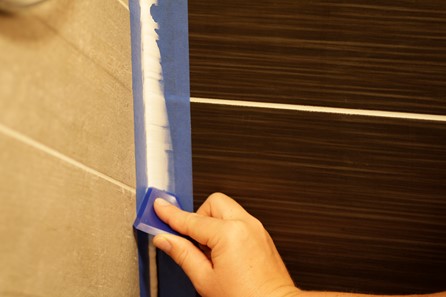
Step 10: Caulking Long Joints
When you have a long run and can’t get it done in one shot, stop at some point of the run (avoid stopping at eye level). (If it’s an especially long run, tool the bead of sealant you just put down before starting the next bead.) Then start at the other end and caulk to meet where you stopped the first run, to avoid creating a glob.
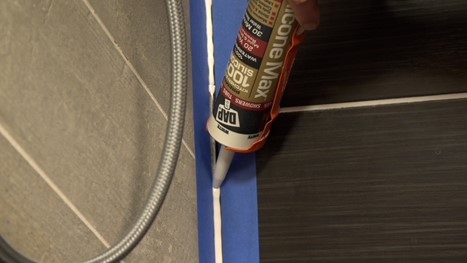
-
Recommended Products
Featured Products
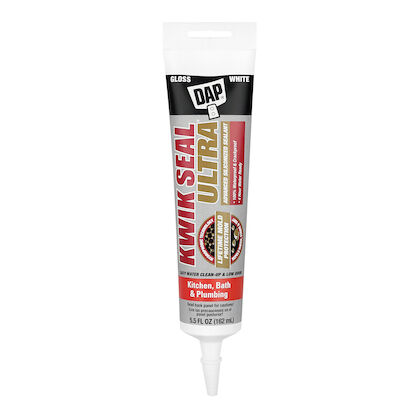
Kwik Seal Ultra Advanced Kitchen & Bath Sealant
Advanced kitchen & bath sealant with ultra-hydrophobic tech. Lifetime mold resistance, 100% waterproof, safe for granite. Easy application & cleanup.
View Product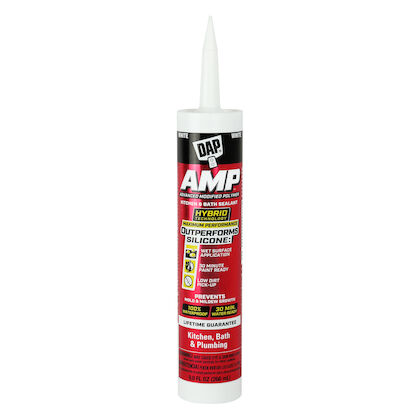
DAP AMP Kitchen & Bath Sealant
AMP Kitchen & Bath Sealant ensures a 100% waterproof seal, applying smoothly on wet surfaces, drying in just 30 minutes, and fortified to resist mold and mildew, backed by a lifetime guarantee, perfect for interior applications.
View Product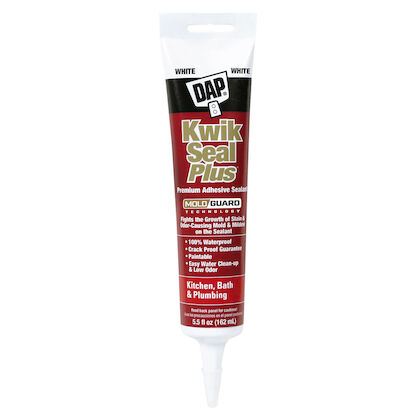
KWIK SEAL PLUS KITCHEN & BATH ADHESIVE SEALANT
Specially formulated siliconized latex that provides maximum adhesion and flexibility for a watertight seal.
View Product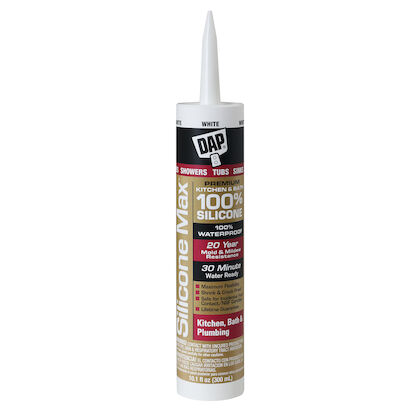
DAP Silicone Max, Kitchen & Bath Sealant
100% silicone sealant for kitchen & bath. Mold & mildew resistant, waterproof seal. Ideal for sinks, tubs, showers.
View Product -
Related Projects
Related Projects
![]()
Choosing the Right Caulk or Sealant
Use this guide to help you find the right caulk or sealant for the most common home projects.
Read More![]()
How to Caulk Like the Pros
Hone your caulking skills with these 8 tips for indoor and outdoor projects.
Read More![]()
How to Tile a Kitchen Backsplash
Follow these 12 key tiling tips and give your kitchen a professional-quality upgrade.
Read More

